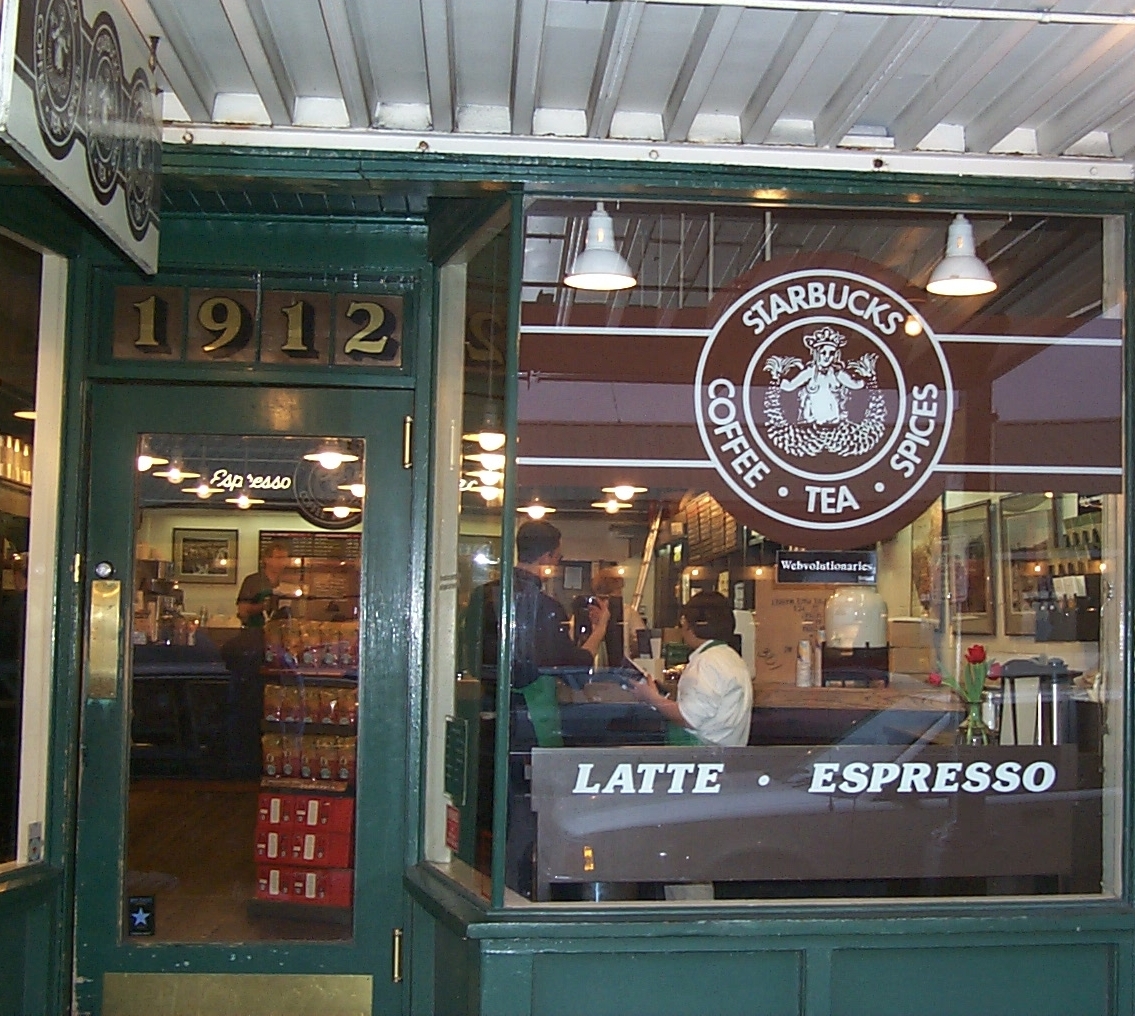


Original Starbucks Address and Store Front Window
On a consistent daily basis, Starbucks, very basically, attracts and caters to an upper middle class clientele; A consuming clientele; A clientele that has time to wait on line and savor a cup of coffee, particularly, one willing and able to spend $4.00 or more on a cup of coffee. “A retailer may depend not only on a substantial number of people nearby, but on a certain type of residential enclave. A kosher butcher needs Jews…”(p.21, Urban Fortunes), thus, Starbucks needs trendy and affluent coffee drinkers. Starbucks situates itself in areas of gentrification, perpetuating wealth for the surrounding area and its rentiers. “Gentrification implies sales to affluent outsiders, and their very presence generates the kind of neighborhood effects (such as increased property value) that make it increasingly likely that other residents will make deals with outsiders” (p.115, Urban Fortunes) as well as creating wealth for themselves (as a capitalistic enterprise).
What is important to realize in hindsight is that Starbucks as a themed space creates wealth in a very exclusive manner: for the power holders, be they the rentiers, or the landowners (who’s already high property values get even higher), or other capitalist entities in surrounding neighborhoods that profit from that same agglomerate economic network that Starbucks both contributes to and profits from as well. Yet those who are not benefiting from this agglomerate economy and rent increase do not merely remain neutral in this equation, rather they are severely affected by the social conflicts reflected and engendered by this themed space.
When Starbucks moves into an area, two important social conflicts arise. First, as it creates that beloved ‘wealth’ that growth machines so avidly fight for, property values in an area rise, simultaneously marginalizing and disenfranchising those who are already scraping to put together whatever rent they are already struggling to pay. Thus, this process creates much displacement of renters in an area. Clearly, Starbucks, must not bare the entire burden of blame, as other capitalist enterprises in an area are equally guilty, however, Starbucks certainly does not improve the situation. Consequently, the establishment of a new Starbucks coffeehouse ultimately perpetuates this process of disruption.
In addition, a second social problem that is engendered by Starbucks is a problem that many chain stores have been found guilty of creating. This problem is one of buying out, or dislocating local ‘mom-and-pop’ coffee shops. This is seen as a danger to locals (not to mention to the owners of the local coffee shops themselves) because they believe that their coffee money leaves the neighborhood, getting swept up in a global economy, as soon as it enters the hands of a Starbucks cashier, “If you instead buy your coffee at a local joint, owned by people who live in town, a larger percentage stays in the local economy. The only ways to grow a local economy are to make at home what you otherwise would have imported, or export something to other places. When a local coffee shop is replaced by Starbucks, the opposite is occurring, you are importing what otherwise would have been made at home.” (The Starbucks Scale, 11/02).
The themed space of Starbucks is a highly contested topic in today’s social arena. However, as long as consumers with purchasing power continue to be enchanted by variety, as well as the trendy seductive ambiance of Starbucks coffeehouses, Starbucks will reign supreme.